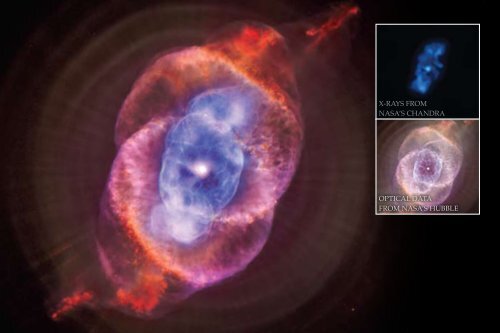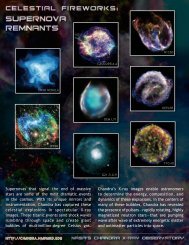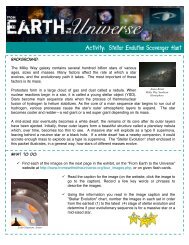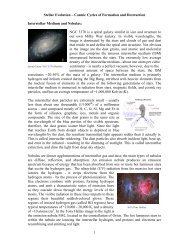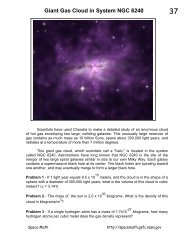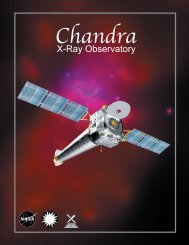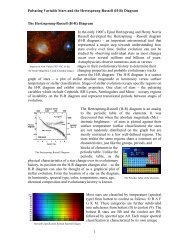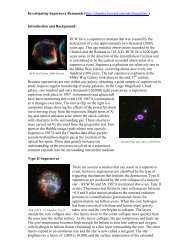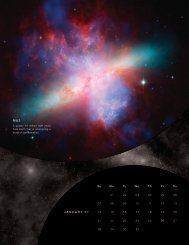POSTCARD (pdf) - Chandra X-ray Observatory
POSTCARD (pdf) - Chandra X-ray Observatory
POSTCARD (pdf) - Chandra X-ray Observatory
Create successful ePaper yourself
Turn your PDF publications into a flip-book with our unique Google optimized e-Paper software.
X-<strong>ray</strong>s from<br />
Nasa’s ChaNdra<br />
optiCal data<br />
from Nasa’s hubble
The Cat’s Eye, offcially known as NGC 6543,<br />
is a so-called planetary nebula, a glowing shell<br />
of gas and dust that forms when Sun-like stars<br />
die.<br />
Planetary nebulas actually have nothing to do<br />
with planets—the name was coined hundreds<br />
of years ago because these objects looked like<br />
planets through small optical telescopes. Rather,<br />
a planetary nebula is a stage of life that our Sun<br />
will experience billions of years from now.<br />
The Cat’s Eye is found 3,000 light years from<br />
Earth in the middle of the constellation Draco,<br />
which is Latin for “dragon.” Draco is found<br />
high in the northern sky.<br />
More at: http:/chandra.harvard.edu<br />
Cat’s EyE<br />
Stars like the Sun live for billions of years, but<br />
their phase as a planetary nebula lasts only a<br />
few hundred thousand years.<br />
The spectacular flamentary structures in plan-<br />
etary nebulas come from the outer layers that<br />
have been shed by the dying star then sculpted<br />
by intense radiation from the hot central star<br />
(bright white dot in middle) that will eventu-<br />
ally become a white dwarf.


